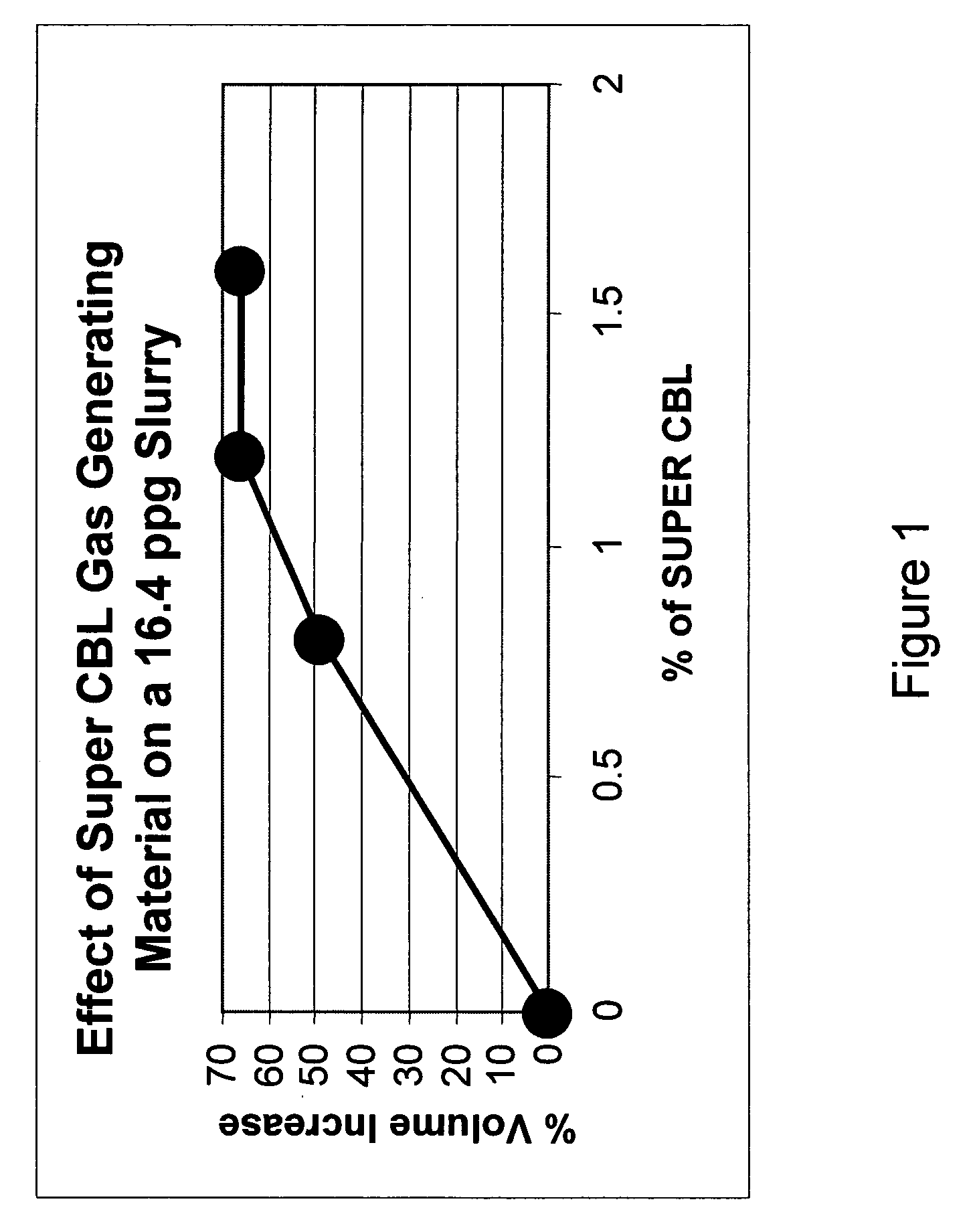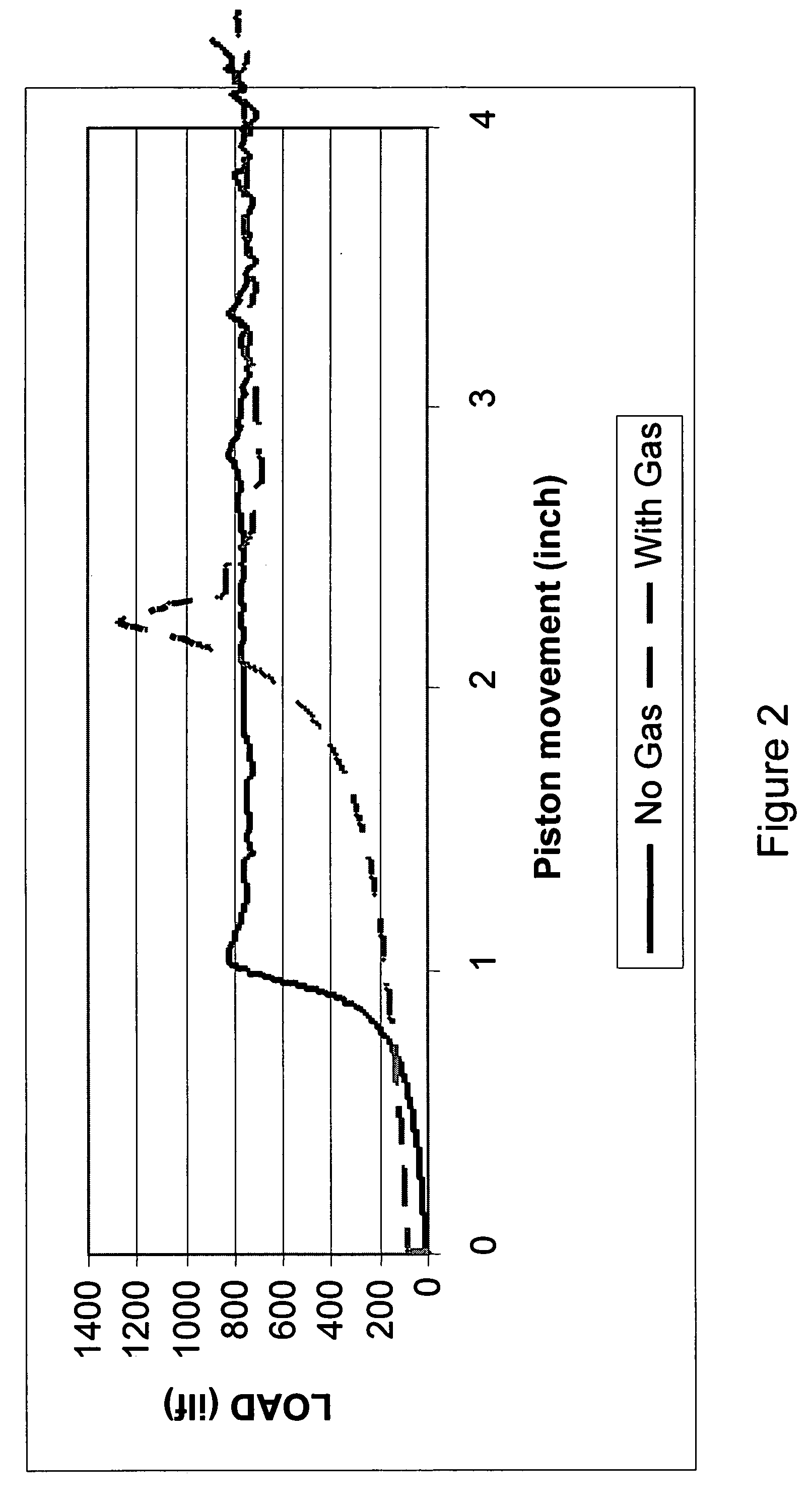Methods of generating a gas in a plugging composition to improve its sealing ability in a downhole permeable zone
a technology of a plugging composition and a gas, which is applied in the direction of sealing/packing, wellbore/well accessories, chemistry apparatus and processes, etc., can solve the problems of inability to provide service by such fluids, the fluid circulation in the wellbore is too low to allow for further drilling of the wellbore, and the other fluids used in servicing the wellbore may also be lost to the subterranean formation. to achieve the effect of improving the sealing ability
- Summary
- Abstract
- Description
- Claims
- Application Information
AI Technical Summary
Benefits of technology
Problems solved by technology
Method used
Image
Examples
example 1
[0046] Various concentrations of a coated aluminum powder known as SUPER CBL additive available from Halliburton Energy Services, Inc. were added as the gas generating material to different samples of a 16.4 ppg class H cement slurry, thereby generating H2 in each sample. The % volume increase of each sample as a result of the generation of the gas was then determined at a temperature of 75° F. and at atmospheric pressure. Slurries with different amounts of SUPER CBL were allowed to set in cylindrical container at atmospheric pressure and 80° F., and once set the volume of the set material in each case was measured. FIG. 1 is a graph showing the % volume increase of the cement slurry as a function of the concentration of the SUPER CBL gas generating material. As illustrated in FIG. 1, the percentage by which the volume of the slurry increased experienced an increase as the concentration of the SUPER CBL gas generating material was increased from about 0% to about 1.2%, and then it l...
example 2
[0047] A FLEXPLUG composition containing gas generated using SUPER CBL was placed in an L-shaped tube having a fracture at its base. A piston in the tube was used to apply an increasing load (i.e., force) to the top of the FLEXPLUG composition, thereby forcing it into and through the fracture. This procedure was repeated for a FLEXPLUG composition containing no gas. FIG. 2 is a graph of the load as a function of the piston movement for each FLEXPLUG composition. The peaks in FIG. 2 represent the when the FLEXPLUG compositions were extruded into the fracture. As illustrated by FIG. 2 and Table 1 below, the load required to extrude the FLEXPLUG composition containing gas was greater than that required to extrude the FLEXPLUG composition containing no gas. Thus, the composition containing gas exhibited greater friction relative to adjacent surfaces of the tube than the composition containing no gas. Further, the distance and therefore duration of piston movement required to extrude the...
PUM
| Property | Measurement | Unit |
|---|---|---|
| Size | aaaaa | aaaaa |
| Temperature | aaaaa | aaaaa |
| Force | aaaaa | aaaaa |
Abstract
Description
Claims
Application Information
 Login to View More
Login to View More - R&D
- Intellectual Property
- Life Sciences
- Materials
- Tech Scout
- Unparalleled Data Quality
- Higher Quality Content
- 60% Fewer Hallucinations
Browse by: Latest US Patents, China's latest patents, Technical Efficacy Thesaurus, Application Domain, Technology Topic, Popular Technical Reports.
© 2025 PatSnap. All rights reserved.Legal|Privacy policy|Modern Slavery Act Transparency Statement|Sitemap|About US| Contact US: help@patsnap.com


